You have /5 articles left.
Sign up for a free account or log in.
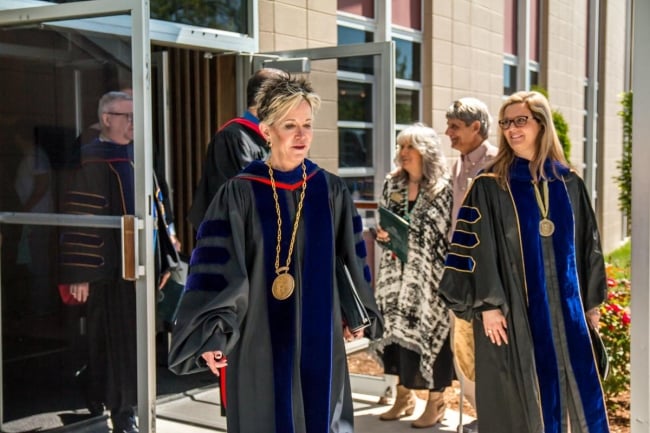
Jahnae Barnett will attend her last William Woods commencement ceremony as president this year.
William Woods University
Jahnae Barnett has a motto: the greatest risk we take is if we take no risk at all.
She said this to faculty members and leaders at William Woods University before the institution launched its now-successful cohort delivery model, which brings William Woods professors and courses to students in rural Missouri. She said it again before the former women’s university took the leap to become coed.
After a long career as president of the small private university in Fulton, Mo., Barnett will take a personal risk, and she will ask the university to take yet another. She announced last month that she plans to retire in December, in the middle of her 31st year as president. William Woods will seek a new president for the first time in decades.
Barnett, William Woods’s first female president, will leave behind a list of accomplishments, having grown the university from an 800-student undergraduate women’s college to a coed university that enrolls more than 2,000 students and offers a range of graduate and undergraduate programs.
Her tenure is noteworthy in part because of how long it is. Many college presidents spend fewer than 10 years at a single institution. In 2016, the average tenure of a college president in their current job was 6.5 years, according to a 2017 study from the American Council on Education.
But Barnett’s many years as president of William Woods were also productive. In an interview, she reflected on some of her biggest accomplishments, including establishing the LEAD Award program, which gives students up to $5,000 toward tuition for attending cultural events. She also grew the university’s endowment, eliminated the university’s long-term debt and became the first college president to open the American Royal, a horse show in Kansas City, Mo.
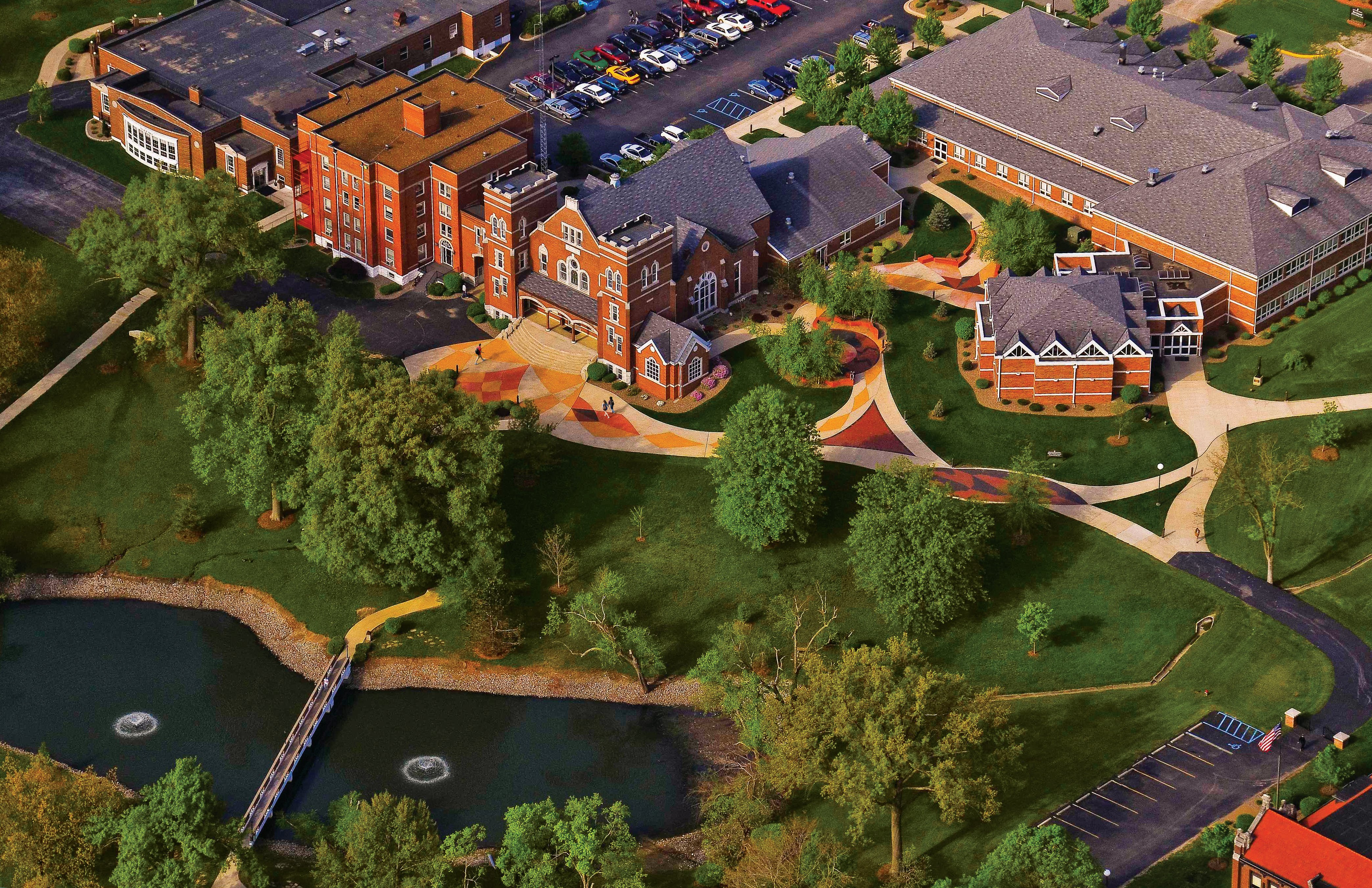 From Small College to Expanded University
From Small College to Expanded University
Barnett first arrived at William Woods in 1973 as chair of the business and economics department and later became a vice president. After 17 years at the university, she was made president in 1990.
A year into her presidency, the superintendent of the Missouri School for the Deaf suggested she start an American Sign Language program at William Woods. The two campuses are only a mile apart.
The American Sign Language program would help grow William Woods's enrollment, but the superintendent’s suggestion also paved the way for gender integration at the university. The American Sign Language program is funded with federal dollars, and as a condition of that funding, the university was required to admit men to the program.
William Woods became coed in 1996 and admitted 50 men in its incoming class that year. Barnett is still in touch with some of those graduates. One of them reached out to her recently.
“I was communicating with this young man recently. He was in the first group of men,” she said. “He made T-shirts that said ‘The Fab 50,’ and he had everybody’s name on the T-shirts. He wrote me recently and said, ‘Do you still have that shirt, Dr. Barnett?’ I said, yes, I do.”
The university’s decision to admit men was not financially motivated and not an enrollment play, Barnett said. It was about creating a social college experience for William Woods students in Fulton. Despite being the largest city in Callaway County, Fulton is home to fewer than 13,000 people.
“I had so many conversations with young people, young women, who really didn't have a social life,” Barnett said. “If we had been in St. Louis or Washington or New York, we could have made it that way, but in a small community, they weren’t having a social life.”
The decision went over surprisingly well, she said. She only received one inappropriate response to the news. She’d received more pushback after converting the college to a university three years prior.
“[Alumnae] were afraid that we were going to become like a major university -- like the University of Missouri, the University of Illinois -- and that William Woods was no longer going to be this nice, small, intimate place where we could go and get our education,” Barnett said.
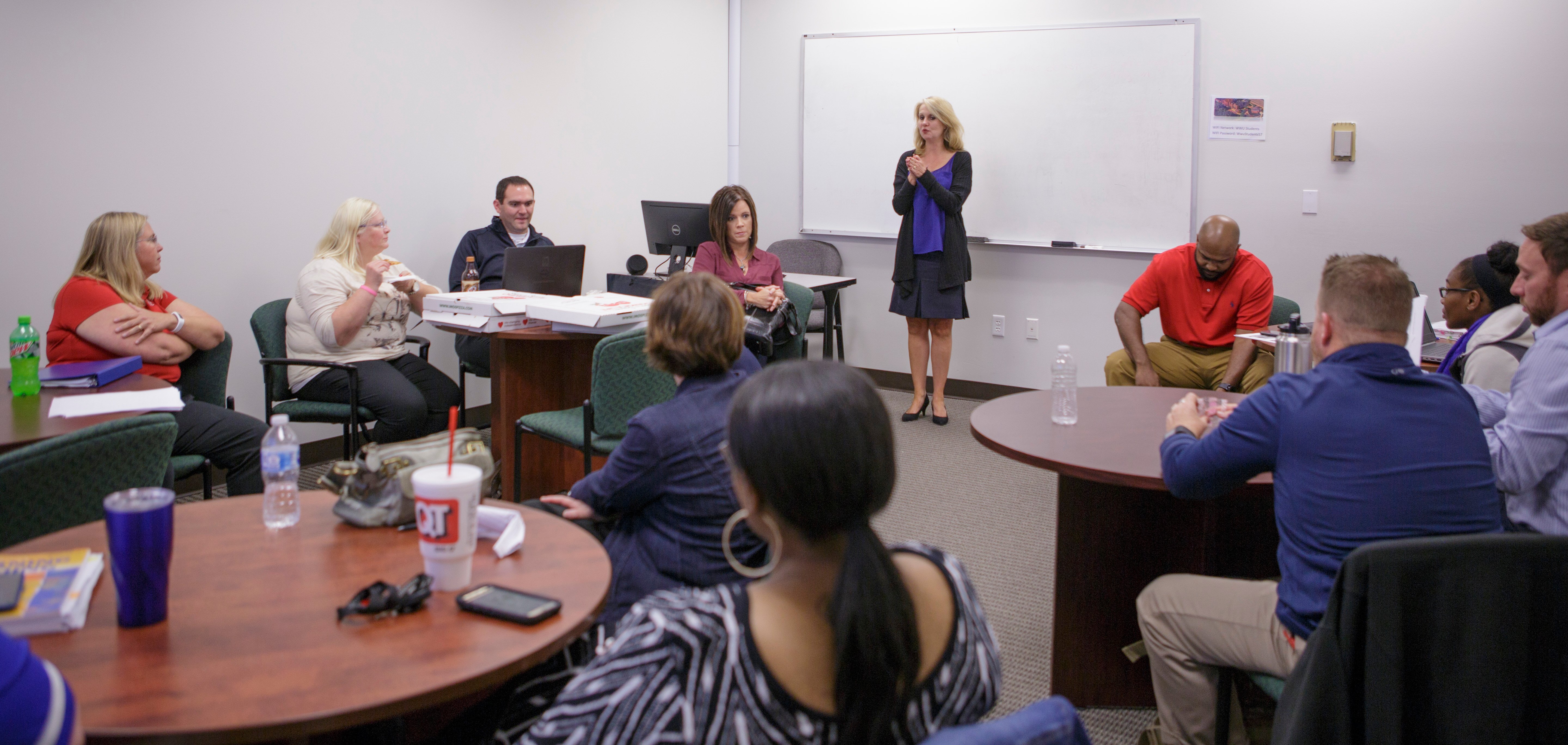 Barnett’s tenure was peppered with new initiatives. In 1992, the university established the cohort model, which brought a William Woods education to students in rural Missouri who couldn’t easily get to campus. Once a week, professors would head to small, rural towns in Missouri to teach.
Barnett’s tenure was peppered with new initiatives. In 1992, the university established the cohort model, which brought a William Woods education to students in rural Missouri who couldn’t easily get to campus. Once a week, professors would head to small, rural towns in Missouri to teach.
“I grew up in the South. So I understood that education was not often accessible if you're in rural areas,” Barnett said. “It was a bold move, but it certainly helped our enrollment.”
After the cohort model, William Woods created its graduate, online and study abroad programs. Though William Woods is a liberal arts institution, Barnett calls it a professions-oriented university, and many of the university’s graduate programs reflect that. Graduate students at William Woods can pursue degrees in several areas of education leadership, health administration and business administration. Williams Woods is also a participant in the Show-Me Guard Officer Leadership Development, or Show-Me GOLD, program, which trains students to become members of the Missouri National Guard.
Barnett is particularly proud of the LEAD Award program, which was established in 2000. Today, the program offers a tuition discount of up to $5,000 for residential students and $2,500 for commuter students who attend a certain number of sporting events, seminars, concerts, films, comedy shows, performances, art exhibits and other cultural events each year. Tuition at William Woods for the 2021-22 academic year stickers at $25,750 before financial aid.
Barnett used to host etiquette dinners as part of the LEAD program.
“I still get emails from kids who graduated years ago and say, ‘I went out to eat with my employer and I know exactly what to do because of those etiquette dinners,’” she said.
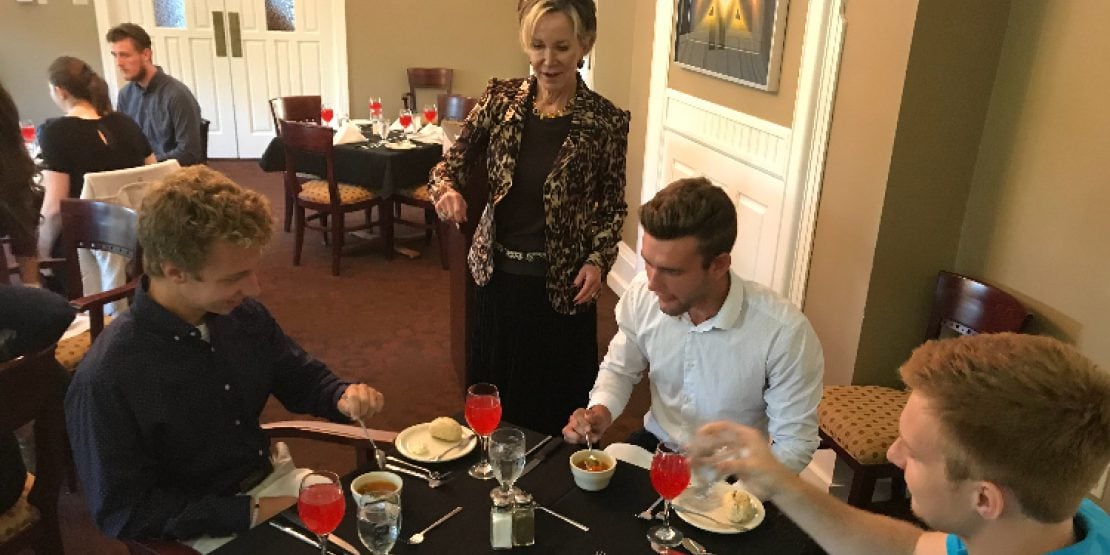 In addition to expanding the university’s academic offerings, Barnett helped improve the university’s finances. During her tenure, William Woods's modest endowment grew from $5.7 million to $19.6 million through fundraising efforts. The university recently received a $2 million donation from one of its board members.
In addition to expanding the university’s academic offerings, Barnett helped improve the university’s finances. During her tenure, William Woods's modest endowment grew from $5.7 million to $19.6 million through fundraising efforts. The university recently received a $2 million donation from one of its board members.
Prospective donors appreciate visits from university leaders, Barnett said.
"It was just cultivating relationships, and they just loved what we were doing," she said. "The previous two presidents didn't travel like I did."
When Barnett became president, the university had been operating in the red for several years. She quickly brought in a new chief financial officer, who, she said, “could get blood out of a turnip.” They audited every expense and consolidated some positions after employees retired or left the university.
“If a staff member retired or they said that they're moving on, we don't automatically replace that person,” Barnett said. “We bring it back to the budget committee, and you have to really explain why this position either can't be incorporated or it's significantly needed for the success of the institution.”
A Hands-On President
In many ways, Barnett was a student at William Woods herself. One year, she approached the theater department about putting on a community show and ended up starring in the play as a character named Violet Lampshade. She performed alongside the president of Westminster College, a liberal arts college less than a mile away from William Woods, who played a sheriff.
“I loved doing the theater production. It was fun,” she said. “I had to wear a long black wig and a big red boa.”
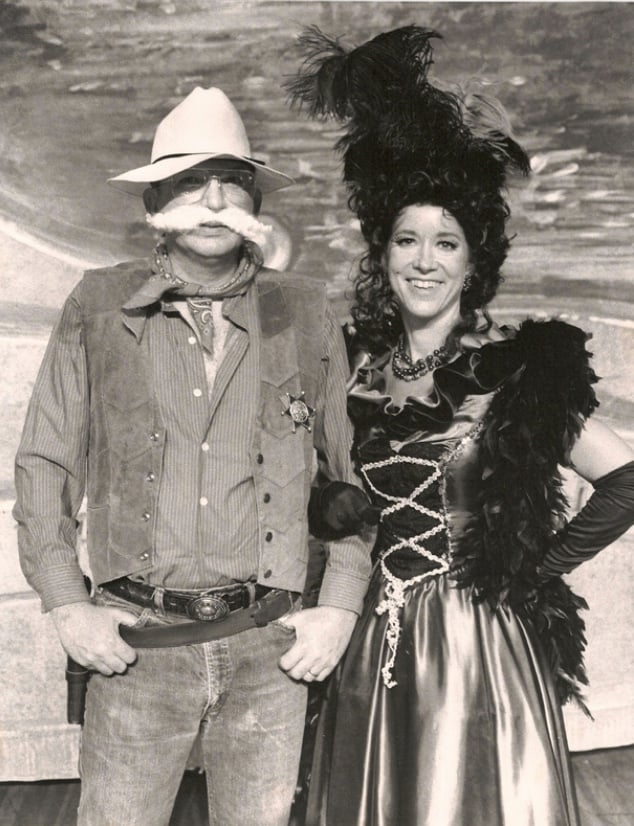 William Woods offers a bachelor of science in equestrian science in all four riding disciplines: dressage, hunter/jumper, saddle seat and Western. Barnett admits that she didn’t understand equestrian science when she first started her presidency and didn’t know how to ride a horse.
William Woods offers a bachelor of science in equestrian science in all four riding disciplines: dressage, hunter/jumper, saddle seat and Western. Barnett admits that she didn’t understand equestrian science when she first started her presidency and didn’t know how to ride a horse.
“I felt that I should,” she said. “So I went over to the stables and I asked a professor who had been a professor with me, can you teach me to ride?”
Barnett took lessons alongside students. She eventually became the only college president to open the American Royal and successfully performed a walk, trot, canter, slow gait and rack on a horse named Copycat at the horse show in Kansas City, Mo.
She’s learned more than just horseback riding. Each year, Barnett attends one class taught by every professor at William Woods.
“I would sit down and go to a class in communications. I would sit down and go to a class in art. And it was really just as a student participant -- they knew I was coming,” Barnett said. “I did all I could to make myself accessible. And they really responded.”
Being an accessible president has always been important to Barnett. She remembered a moment early in her presidency when she knew she had to work harder to get students to see her as a regular person and not a larger-than-life college official.
“One day, a student came up to my door at the house to deliver something, and I opened the door, and she went, ‘Dr. Barnett? You're in blue jeans,’” Barnett said. “I went, ‘Oh dear, I’ve got to correct this.’”
She brought her concern to an alumni meeting.
“I said, ‘I can't get the kids to see me now. They only see me as a president in a three-piece suit,’” Barnett said. “And one of the alum said, ‘Get a dog.’”
So she did. That year, Barnett adopted a standard poodle named Cognac. Wearing sweatpants or blue jeans, she would walk Cognac through campus, and students would stop to meet him. He was also a troublemaker, she said.
“My house was on campus, and the soccer field was in front of our house. One day, on the weekend, I was sitting in the back and I was in a lounge chair reading, and I had Cognac with me, but I guess I wasn't paying attention,” she said. “And I heard two young men say, ‘Dr. Barnett? … We're bringing Cognac back because we can’t play our soccer game. He keeps picking up the balls.’”
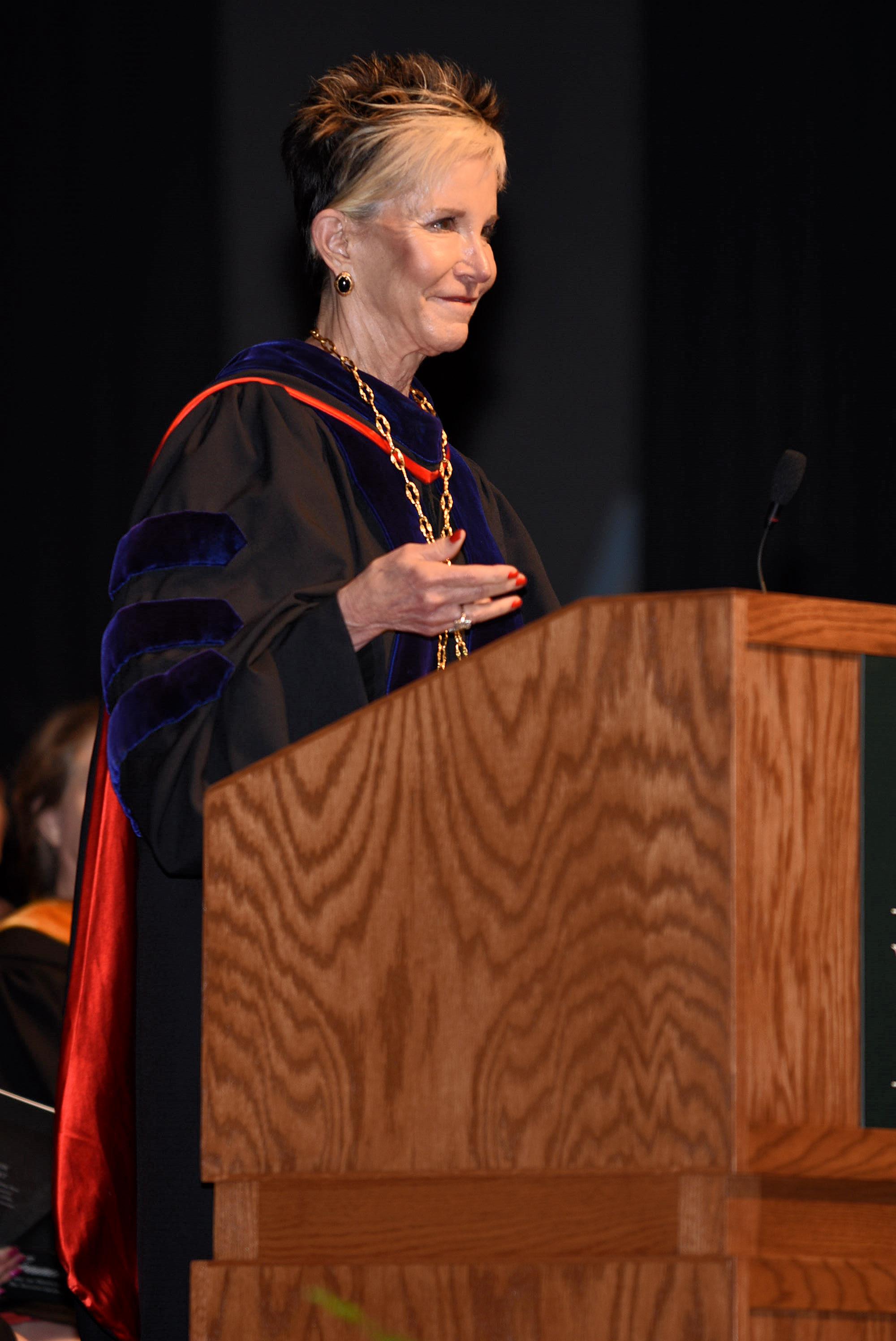 Asked what advice she had for her successor, Barnett focused on keeping tabs on the campus culture and communicating regularly. Barnett maintained an open-door policy throughout her presidency, which she said is one of the most effective things she did. If her door was open -- and it was often -- students, faculty and staff members could waltz right into her office to have a chat.
Asked what advice she had for her successor, Barnett focused on keeping tabs on the campus culture and communicating regularly. Barnett maintained an open-door policy throughout her presidency, which she said is one of the most effective things she did. If her door was open -- and it was often -- students, faculty and staff members could waltz right into her office to have a chat.
Barnett also convened several advisory groups. Like most college presidents, she meets with a 13-member cabinet composed of the university’s chief financial officer and vice presidents from student life, academic affairs, communications and other areas of the university.
She meets once a month with a faculty advisory board, called FAB, which is made up of faculty members from each major academic discipline. She also meets regularly with a group of students called PXX, or the President’s 20. The students serve as an advisory council to Barnett.
People are the most important thing to Barnett.
"You have to be able to communicate, and they have to see you and they have to believe in you," she said.
Barnett plans to move to Santa Fe, N.M., after she wraps up her tenure in December. She will keep trying to live by the advice she gives to graduates on commencement day.
“If the rest of your life is not the best of your life, then we have failed,” she tells them. “And we don't fail.”








